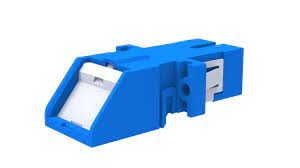In the ever-evolving world of fiber optics, ensuring optimal performance is crucial. One often-overlooked component that plays a significant role in maintaining fiber optic connections is the dust shutter fiber adapter. This guide aims to provide a comprehensive understanding of dust shutter fiber adapters, their importance, and how to choose and maintain them for peak efficiency.
Understanding Dust Shutter Fiber Adapters
Dust shutter fibre adapters serve as protective mechanisms for fiber optic connectors, safeguarding them against environmental contaminants like dust, dirt, and moisture. These contaminants can compromise signal integrity and lead to reduced performance or even system failure. The adapters feature a spring-loaded shutter that automatically closes when the connector is not in use, preventing foreign particles from entering and causing damage.
Importance of Dust Shutter Fiber Adapters
The significance of dust shutter fibre adapters lies in their ability to extend the lifespan and performance of fiber optic networks. By creating a barrier against external elements, these adapters contribute to maintaining signal quality, reducing the need for frequent cleaning and maintenance. In industries where reliability and uptime are critical, such as telecommunications and data centers, the use of dust shutter fiber adapters becomes paramount for ensuring seamless operations.
Choosing the Right Dust Shutter Fiber Adapter
Selecting the appropriate dust shutter fiber adapter involves considering several factors. Compatibility with connector types, such as SC, LC, or MTP/MPO, is a fundamental aspect. Additionally, the environmental conditions in which the adapter will be deployed must be taken into account. For harsher environments, adapters with enhanced sealing capabilities may be required. Understanding the specific needs of the application and network infrastructure is crucial to making an informed decision.
Installation and Maintenance Tips
Proper installation is key to maximizing the effectiveness of dust shutter fibre adapters. Ensure that connectors are clean before inserting them into the adapter and avoid unnecessary handling. Regular inspection and cleaning of the adapters are recommended, particularly in environments prone to high levels of dust or contaminants. Establishing a routine maintenance schedule can help identify and address issues before they impact network performance.
In conclusion, the Dust Shutter Fiber Adapter Guide serves as a comprehensive resource for individuals seeking to optimize their fiber optic connections by implementing dust shutter fiber adapters. Throughout this guide, we have explored the key features, benefits, and installation procedures associated with these adapters.
The importance of maintaining a dust-free environment for fiber optics cannot be overstated, as contaminants can significantly degrade signal quality and overall network performance. By understanding the role of dust shutters and following the step-by-step instructions provided in this guide, users can enhance the reliability and longevity of their fiber optic connections.
It is crucial to regularly inspect and clean fiber optic connectors, ensuring that the dust shutters effectively protect against environmental particles. Additionally, choosing the right type of dust shutter fiber adapter based on specific application requirements is vital for achieving optimal performance.
As technology continues to advance, staying informed about the latest developments in fiber optic connectivity and implementing best practices will be key to ensuring a seamless and efficient network. The Dust Shutter Fiber Adapter Guide serves as a valuable tool in this journey, empowering users to make informed decisions and maintain peak performance in their fiber optic installations.
Contact Linden Photonics to get a quote or Call Us at (978) 392-7985

